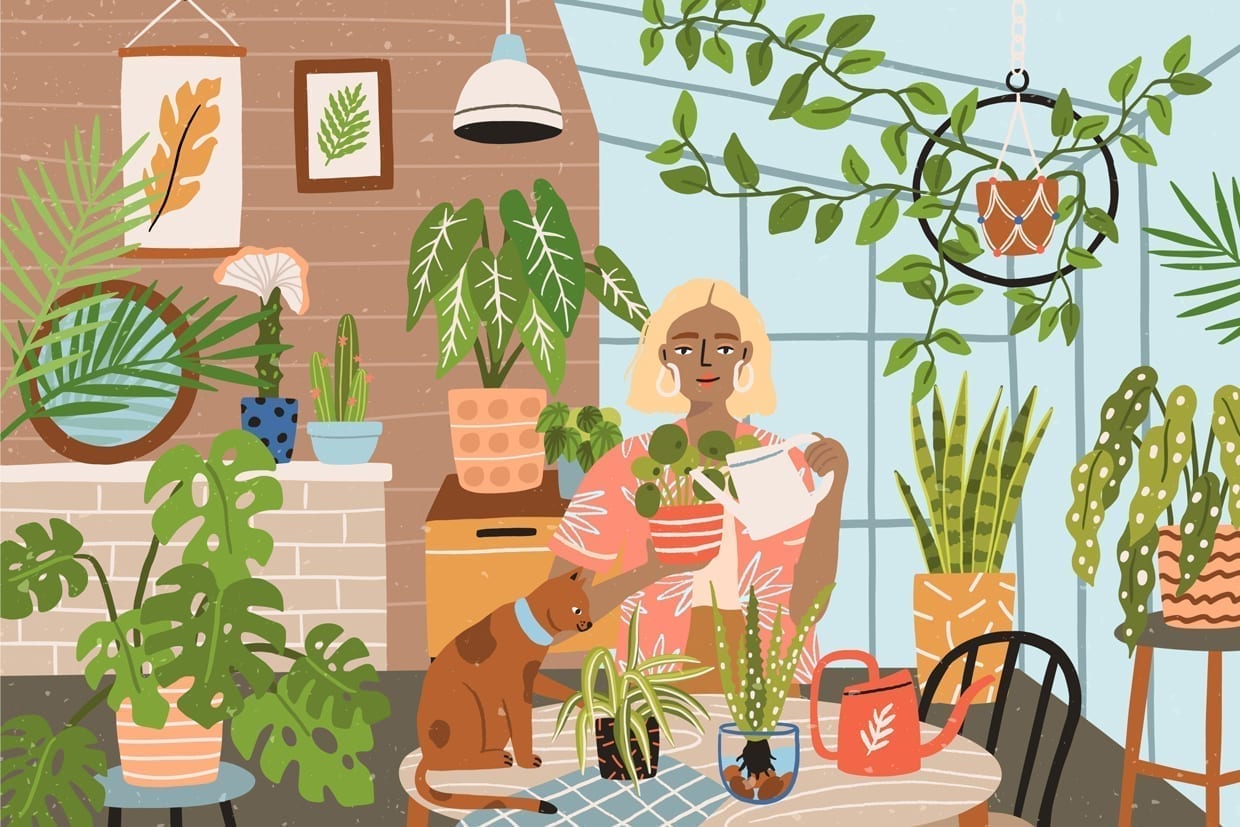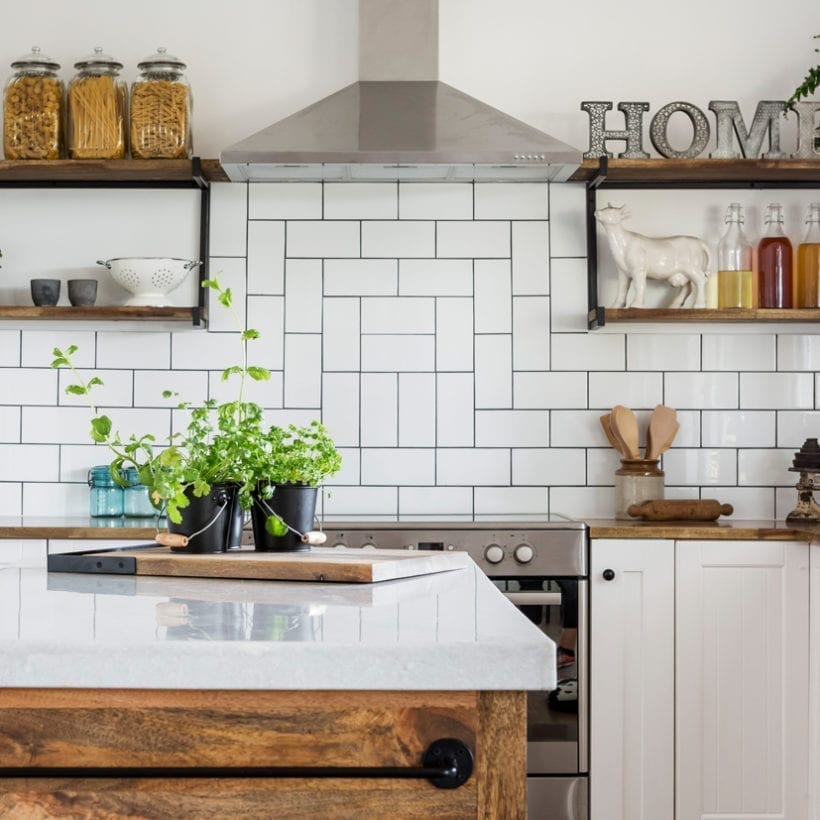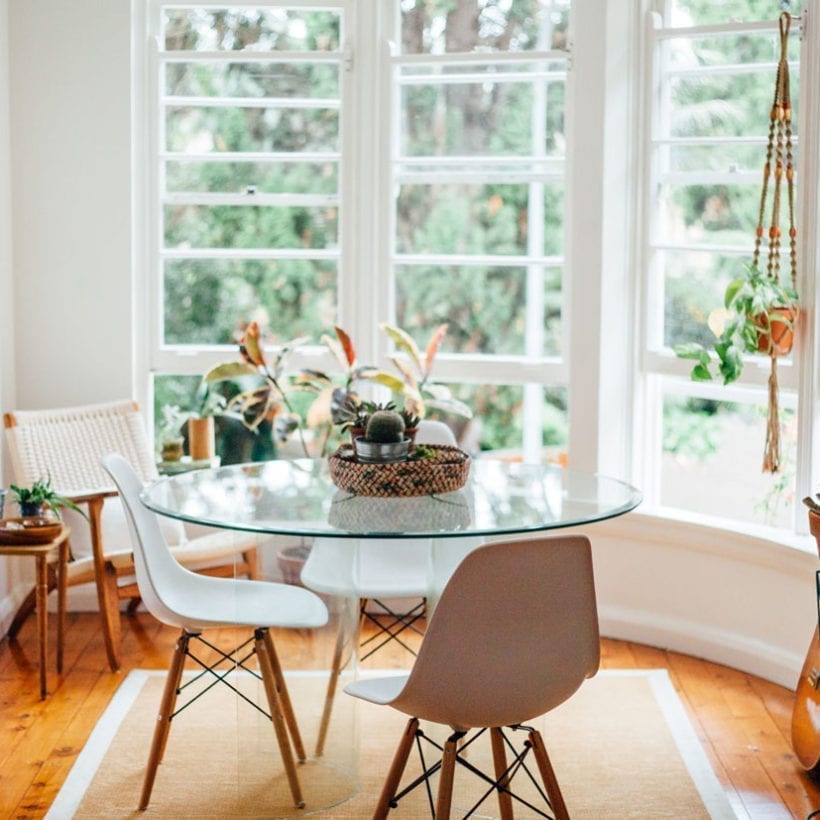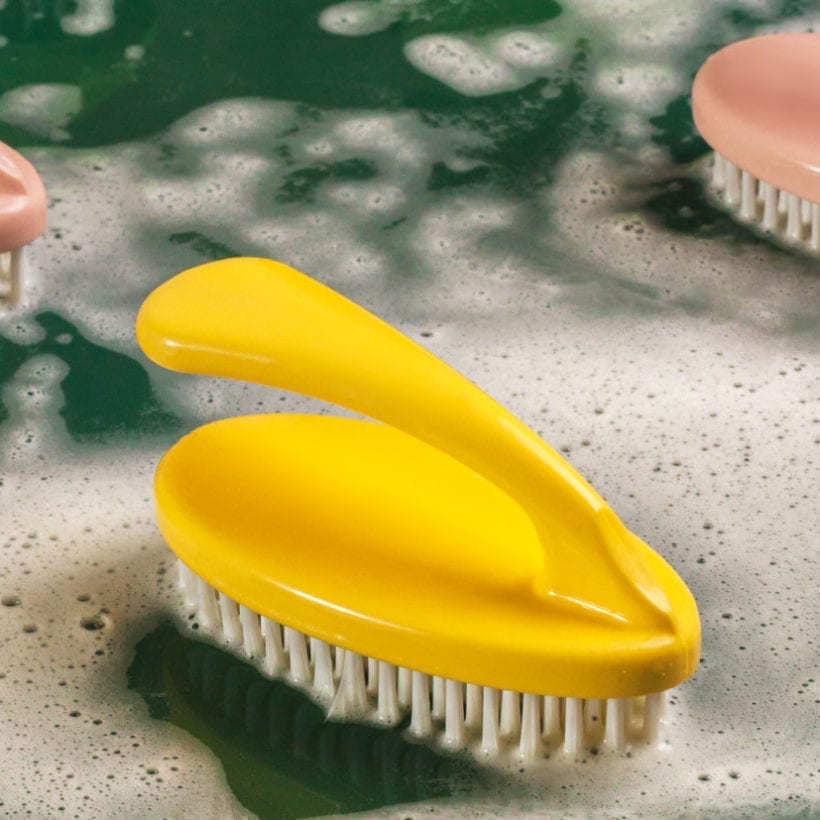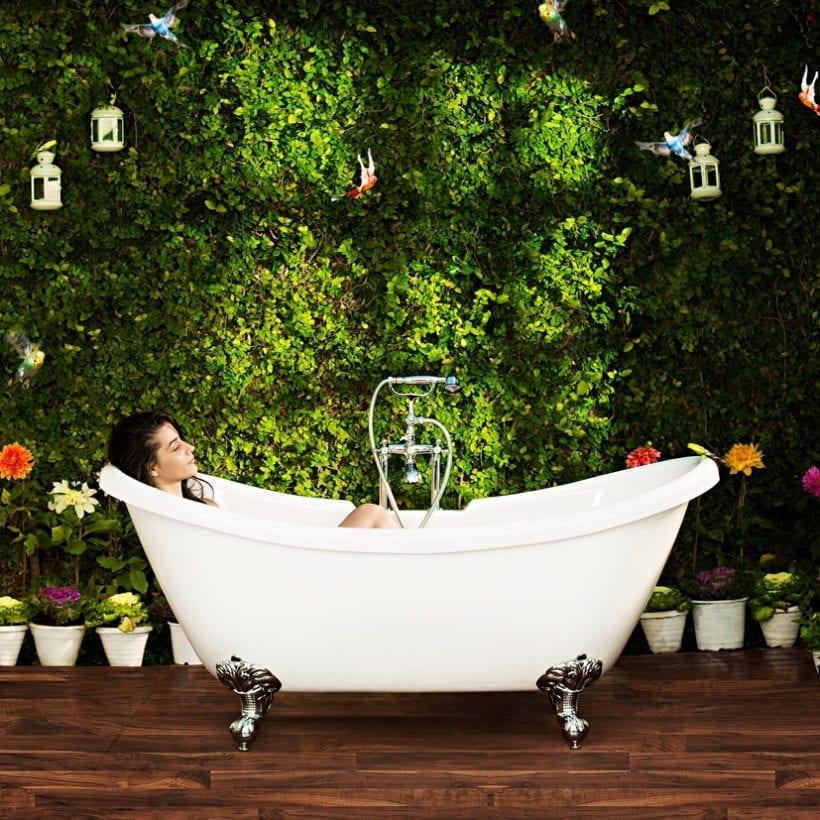For those of us striving to reach peak plant mom status, there is nothing sadder than a dying houseplant. After bringing our ficus, fern or fiddle-leaf fig tree home from the nursery, finding it the finest pot, and vowing to water and care for it — we will not kill this one! — being met with browning or wilting leaves just weeks or months later feels like the ultimate defeat.
The good news is that just because a houseplant appears to be dying does not mean it is a lost cause. In fact, with a few key tips, you can breathe new life into your plant baby and revive your green thumb. Up ahead, find the main causes of a dying houseplant, plus how to reverse the damage.
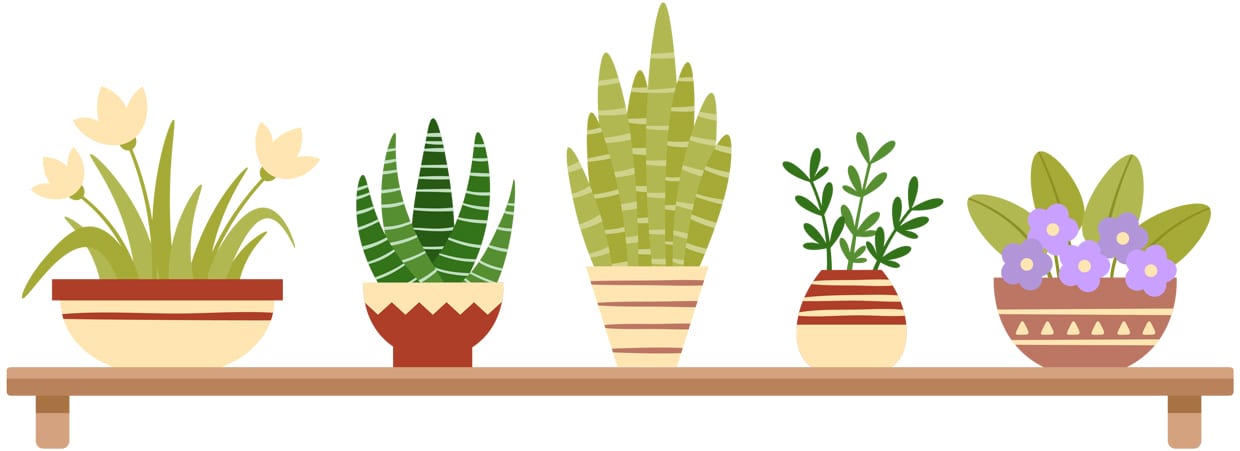
Why is Your Houseplant Dying?
Overwatering: Because houseplants are living, breathing things, they require plenty of water, sunlight and a good pot to survive. That being said, there is a fine line between green thumb and helicopter plant parent — the latter of which can be the sole reason for your plant’s dying state. Case in point: Your plant needs that H2O, but overwatering can make things much worse. “Water is not love,” says Amanda Thomsen, a horticulturist and houseplant expert. “Too much water is usually what kills plants, not too little.”
Proper Drainage: Fighting the urge to quench your houseplant at every opportunity is not the only way to prevent your foliage from dying. Thomsen says to make sure your pot has drainage and, if it does not, to drill a hole in your plant’s decorative abode to avoid the inevitable overwatering. “The pro way is to keep them in the grower’s pot [aka, the plastic pot that it was purchased in], then cover the soil with moss. This way, your plant will never sit with wet roots,” she explains.
The Right Sun Situation: Failing to place your plant in the right area of your home is another green thumb don’t. “Make sure you’re buying the right plant for the right sun situation,” notes Thomsen. “You can’t fake full sun,” she adds. With that in mind, changing your mentality from “will this plant work in my home?” to “will my home work for this plant?” is a great place to start. If a houseplant requires full sun but your home cannot provide it with its requirements, find a plant that does well in medium or low light such as a snake plant.
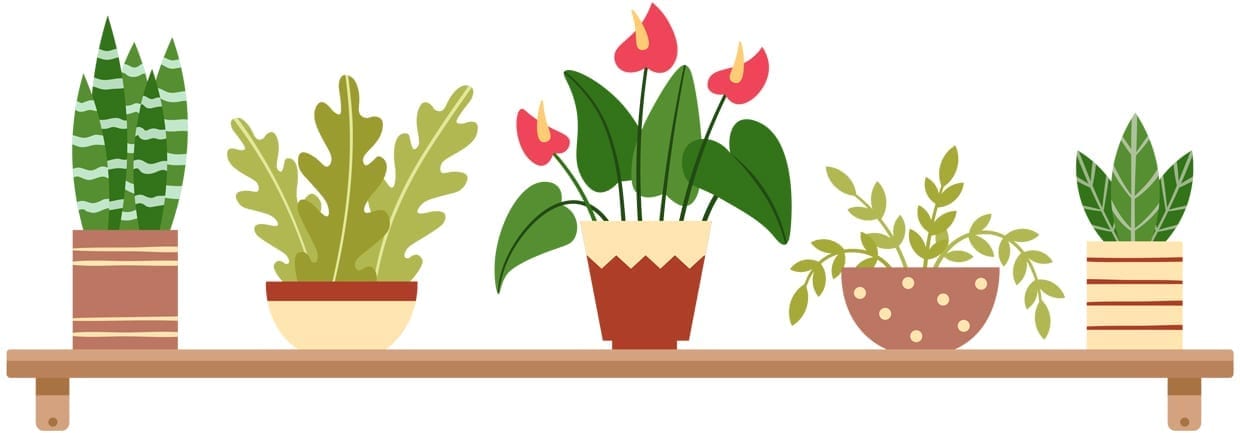
How to Save a Dying Houseplant
Change out the Pot: If your plant is dying and its pot does not have drainage, that might be the solution to your plant care woes right there. “If your plant is in a decorative pot with no way for extra water to flow out, change the pot,” says Thomsen. Additionally, she says to also avoid repotting your plant in a larger vessel. “Plants don’t need to be potted up a size as much as people seem to want to do that,” she notes.
Put it Outside: Thomsen says one of the biggest reasons why plants die — aside from an influx of water, of course — is lack of humidity. “Air conditioning and heating is a huge reason why plants die. Most plants thrive with lots of humidity in the air and we are fighting that so hard to keep the humans in the house happy with low humidity,” she notes. Luckily, you can have your thriving plant and air-conditioned home, too. “I keep a humidifier on my plants in the winter and do a lot of spritzing in the summer,” says Thomsen. On top of that, she also likes to place her plants outdoors during the summer for added humidity. “Put it outside and let Mother Nature baby it back to good health. You’ll know if it was a lack of humidity pretty quickly,” she remarks.
Show it the Light: “The plant will become more open and airy, trying to increase its surface to nab all the photosynthesis it can before starting to die back,” she says of houseplants that die due to lack of sun. To ensure your plant baby gets the sunlight it requires, look up the type of plant’s sunlight requirements and move your foliage accordingly.
Check the Soil for Moisture: When it comes to houseplants, not all plant mom duties are pretty. In fact, a very important step requires you to get your hands dirty. “You need to get friendly with your soil,” says Thomsen. “The best moisture meter on the market is you just sticking your finger into the soil. If you feel moisture, don’t water. It if feels dry, you can water.”
Nourish Your Plants: If your plant has lost its perk, it could be due to a lack of nourishment, aka fertilizer. Fertilizer ensures optimal soil nourishment and growing environment, which is why it should be part of your regular routine. “Use a weak fertilizer solution weekly,” says Thomsen. “I like worm castings for my indoor plants — it’s organic, so I can’t go overboard and damage the plants,” she adds.
Keep an Eye on Insects: Despite being in the safety of your own home, houseplants are prone to pests, too. Fortunately, keeping up with insect watch is fairly easy — and Thomsen has a trick that makes them all the more noticeable. “It’s gross but sometimes it’s easier to notice the honeydew (aphid/scale poop) which looks like drops of water or sap. Wipe the [leaves] down and treat them with a systemic and you should be good to go,” she advises.
